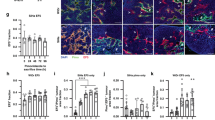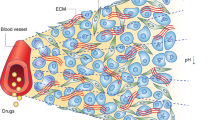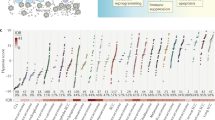Abstract
Pyrazinamide, the pyrazine analogue of nicotinamide, has been evaluated for its ability to modify the radiation response of hypoxic cells both in vivo and in vitro. Results obtained with three different murine tumour systems EMT6, LLC and SCCVII showed that pyrazinamide at a dose of 0.5 mg g-1 i.p. resulted in enhanced radiation response. Dose modification factors of between 1.3 and 1.6 were observed using in vivo/in vitro clonogenic assays. This enhancement was greater than that obtained in mouse intestine using crypt cell survival as an endpoint (DMF 1.1). In contrast to the tumour data in vivo, the in vitro results indicate that pyrazinamide displays little radiosensitising or toxic properties towards hypoxic CHO cells in culture. These results suggest that pyrazinamide exerts its effects in vivo either by directly perturbing tumour physiology or by being converted to an active metabolite. Blood flow studies performed using laser Doppler flowmetry indicate that pyrazinamide produces a small (32%) increase in overall tumour blood flow in the SCCVII tumour. Based on this finding, additional studies on tumour perfusion at the microregional level were performed in the SCCVII tumour using a histological technique involving injection of fluorescent stains which demarcate functional vasculature. The data show that when compared to saline injected controls, pyrazinamide reduced the number of vessels opening and closing over a 20 min period from 10.2% to 3.8%. This finding suggests that pyrazinamide may exert its effects at least in part by reducing the occurrence of acute hypoxia resulting from dynamic changes in microregional perfusion.
This is a preview of subscription content, access via your institution
Access options
Subscribe to this journal
Receive 24 print issues and online access
$259.00 per year
only $10.79 per issue
Buy this article
- Purchase on Springer Link
- Instant access to full article PDF
Prices may be subject to local taxes which are calculated during checkout
Similar content being viewed by others
Author information
Authors and Affiliations
Rights and permissions
About this article
Cite this article
Chaplin, D., Trotter, M., Skov, K. et al. Modification of tumour radiation response in vivo by the benzamide analogue pyrazinamide. Br J Cancer 62, 561–566 (1990). https://doi.org/10.1038/bjc.1990.330
Issue Date:
DOI: https://doi.org/10.1038/bjc.1990.330
This article is cited by
-
PET hypoxia imaging with FAZA: reproducibility at baseline and during fractionated radiotherapy in tumour-bearing mice
European Journal of Nuclear Medicine and Molecular Imaging (2013)



